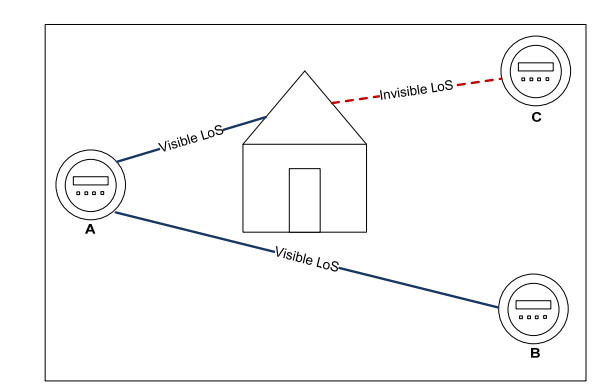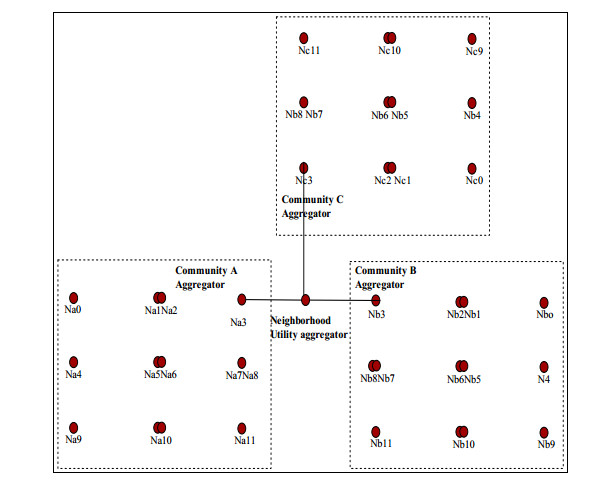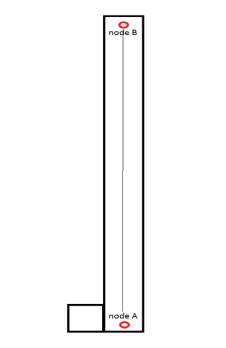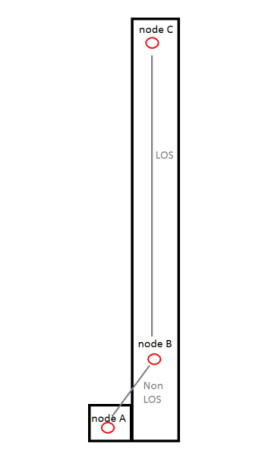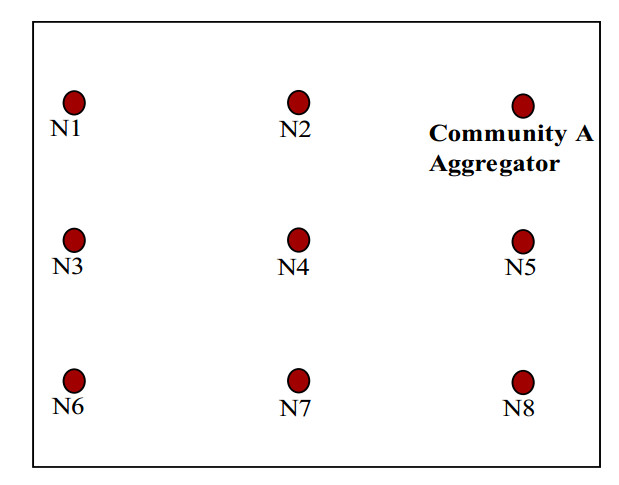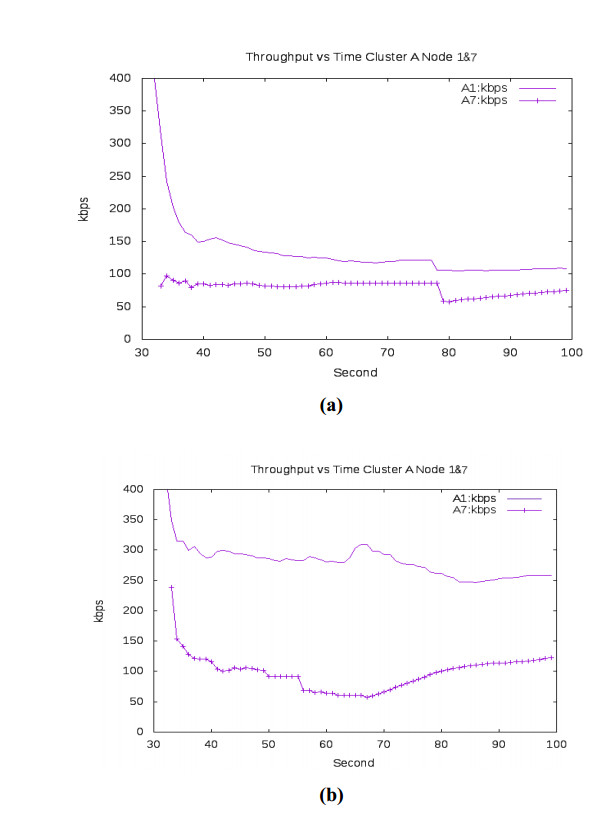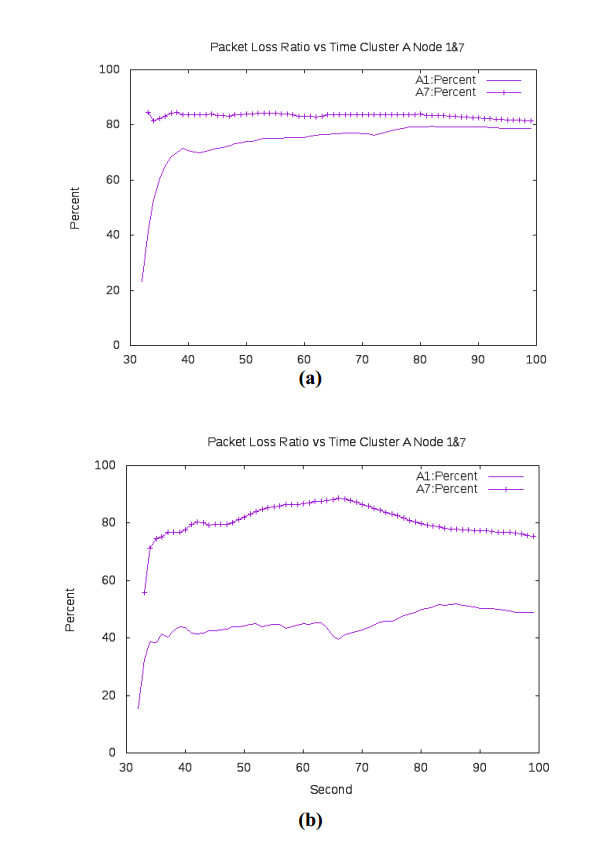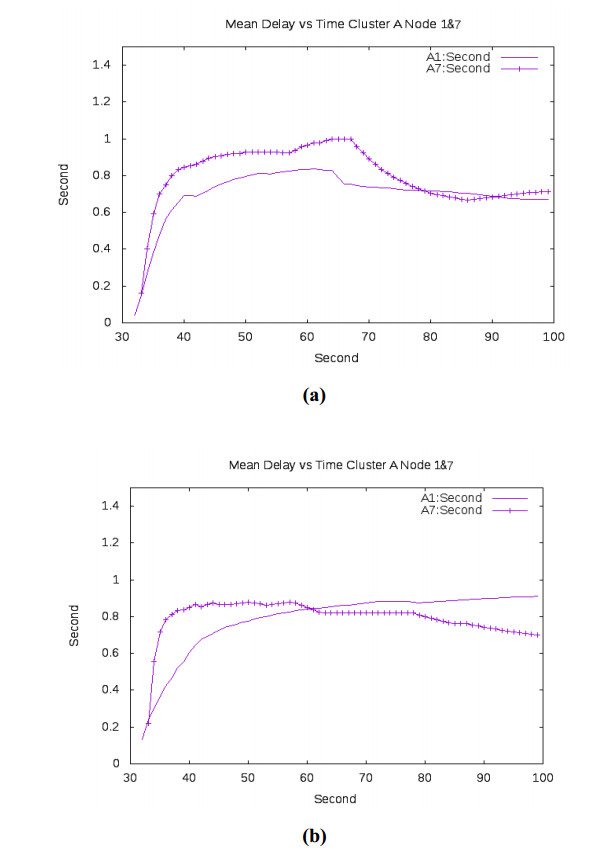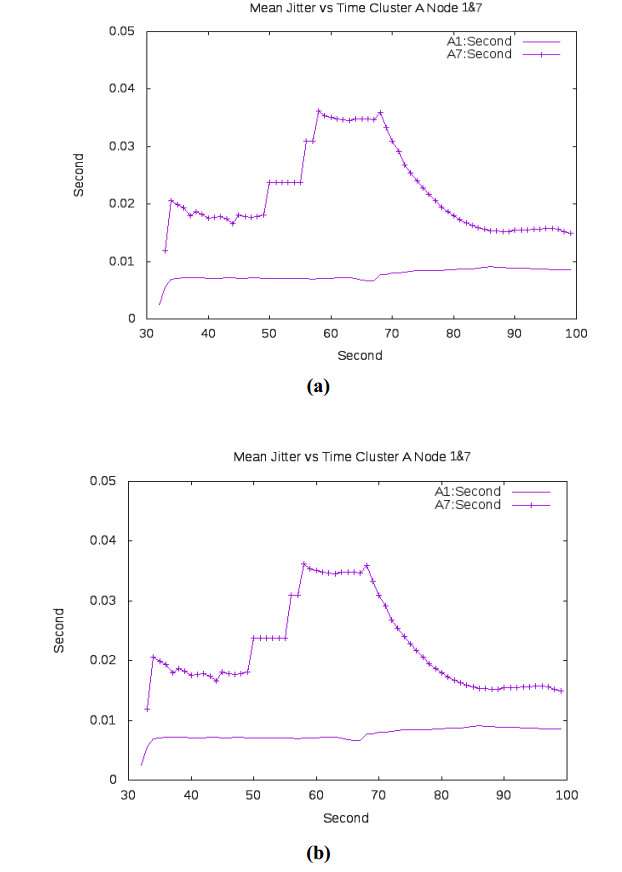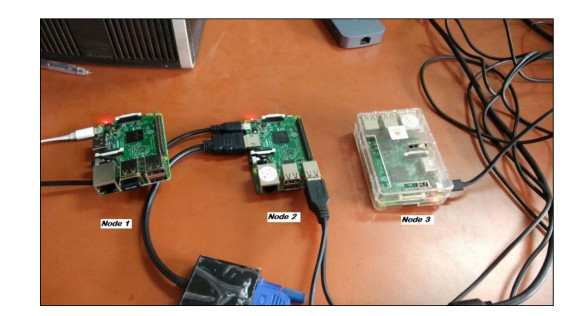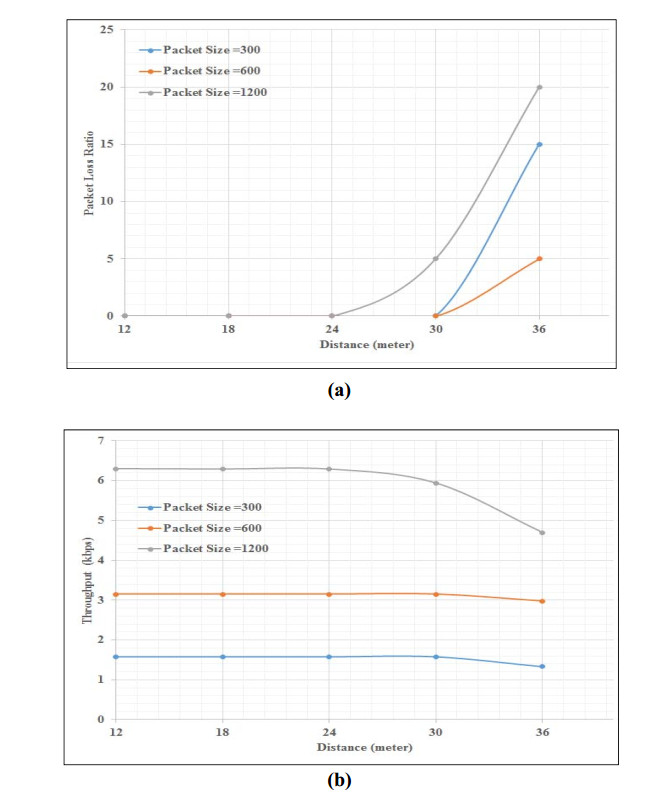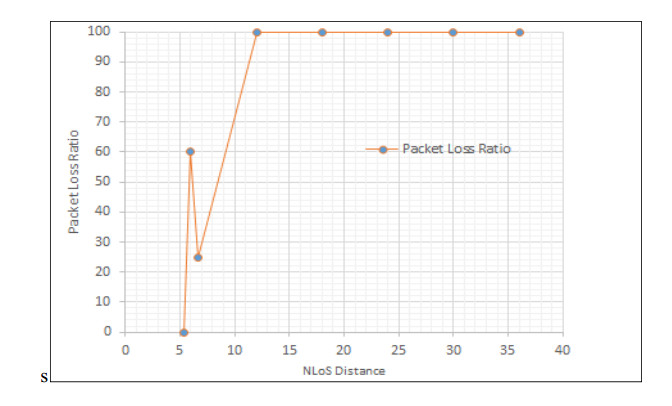Smart meters are intelligent next-generation energy meters which are used for measuring energy consumption and transmitting information over a network. In a real-time environment, a smart meter network faces congestion and coverage issues. To connect to the network, a network interface card (NIC) is installed for each smart meter. NICs are hardware components that link a host to a network and acts as both the physical and data link layer. Generally, a single node is connected to a NIC. We found that the use of multiple NICs in a node shows significant improvement over the use of a single NIC to overcome network congestion in a real-time environment. The line of sight (LoS) between the transmitter and the receiver is a coverage issue in a smart meter network, which leads to an increase in the packet loss ratio (PLR). In this work, we address network congestion and the coverage issue through multi-channel capability and maximum LoS with single-and multi-hop nodes respectively. The proposed multi-channel network shows two times improvement in the throughput over the regular system; with additional hardware and approximately 1.5 times lower PLR for Node. The experimental results suggest that for a single-hop node, approximately 30 m is the average distance over which LoS communication is possible, and for multi-hop nodes, the distance is 24 m.
1.
Introduction
The current outgoing generation of electricity monitoring and billing technology depends on traditional energy meters. These meters are installed in discrete households to measure the consumption of electrical energy. The energy consumed would then be noted, and the tariff is calculated by personnel who would check the energy meter at each household. This process is extremely inefficient and time-consuming. In addition, manual calculation can be erroneous, and the entire process is not scalable because of the incredible amount of manpower that would be required to complete the task. As a result, over the last few years, the use of these meters is slowly being phased out because of the rapid changes that have occurred to address the problems that have been mentioned previously. Another major problem involves consumers being unaware of their daily behavior. Monthly feedback given to consumers is not sufficient to gage how appliances consume energy. Smart meters are intelligent, network-based energy meters that solve most of the problems associated with traditional energy meters. With the use of smart meters, usage alerts can be provided to consumers based on a fixed interval of electrical energy utilization. In addition, data collected by the smart meter are then sent over the network to the regulatory board, eliminating the need for manual calculation. This removes the erroneous quotient in tariff calculation, leading to better approximation of the cost.
This paper focuses on the network aspect of sending data over the network. In our implementation, we use an ad hoc wireless network, which is decentralized and therefore does not require a preexisting infrastructure as a transfer medium [1,2]. Each node (or individual household in the real-world scenario) would play its part in transferring the node by finding the best possible route, which is calculated by the number of hops to the target node via the intermediary nodes. Generally, a smart energy meter is installed with a single network interface card (NIC) [3]. Although sufficient for today's use, it has a huge disadvantage of not being widely scalable. Thus, we propose the introduction of two NICs on each node to implement a multi-channel scheme of transferring data, and this has proven to be not only more efficient at transferring packets while increasing the throughput but also more scalable, which is evident in our simulations at different scales. The introduction of multi-NIC systems would ultimately accelerate the restructuring of the electricity grid system in our country through improved credibility of the smart meters, which can efficiently and quickly transfer the required data and allow consumers to experience a positive quality of service [4].
To find an optimal network architecture that can support a large number of smart meters while giving high quality service, specifically, low jitter, low delay and low packet drop rate. After successful simulations through the ns3 network simulator, we move forward with the practical demonstration of using multiple network interface cards on a single node to ultimately be able to showcase the positive usage of multiple NICs in smart energy meters.
This paper is organized as follows. Section 1 gives the general introduction of the research work. Section 2 includes literature survey and explains the various concepts and terminology that have been used including the networking methodologies that were implemented. Section 3 describes the primary problem we are striving to find a solution for and also provides an in-depth evaluation of our proposed design. Section 4 details our entire implementation and presents the results, analysis, and comparison of the results with the existing infrastructure in use today. Section 5 concludes our work and briefly describes future work to be carried out.
2.
Literature survey
The research work emphasizes to provide quality performance to the current infrastructure of smart grid systems in India. We studied the current infrastructure in use today and the advantages of using smart meters over traditional energy meters, which are becoming obsolete.
2.1. Smart grid infrastructure and smart meters
There are several limitations to the current generation of energy meters. Some of these meters include those that lack a complete digital structure, leading to erroneous metering because of the mechanical components, the manpower required to capture the data, and the inability to adapt to modern technology advancements [5].
The next step in advancement is the implementation of a smart grid system. This system builds on the existing infrastructure of the electricity grid system but with the installation of smart meters. Recent electricity grids are becoming incapable of recognizing electrical load variations among household appliances. A rising population causes an increased load on the electricity grid, and necessary changes must be made to improve the scalability of the system. Increasing the efficiency of the grids by means of using remote control with reliable communication, accurate measurement and communicating that data in real time to consumers and suppliers is the essence of the smart grid [6].
By replacing traditional energy meters with future-proof meters that use a computer to instantaneously calculate energy consumption in addition to transmitting information between the household and the regulatory board, we can transition from the currently obsolete technology to a much more scalable and efficient system.
A smart meter is a modern network-based energy meter. It provides a medium for customers to improve their electricity consumption. Smart meters belong to a division of advanced metering infrastructure (or AMI) and are responsible for sending meter readings automatically to the energy supplier, as depicted in Figure 1. The benefits of smart meters are enormous, and almost all the problems associated with traditional metering can be solved by replacing the traditional meters with smart meters.
2.2. Advanced metering infrastructure
AMI enables two-way communication between utility providers and consumers with the aid of a smart meter gateway. In addition, it allows customers to decide on better choices for their future energy usage. AMI comprises the transport of information on metering data to the agammaegator of the energy provider. Because of increased flow of information between the consumer and the utility providers, congestion and loss of information are prevalent [7]. Hence, there is a need to improve the scalability of the network. Multi-channel capability can help achieve scalability. This can be achieved by introducing multiple subnetworks with different operating channels.
2.3. Channel interface and channel switching
In wireless mesh networks, it has been observed that network performance is significantly affected by wireless interference [8]. In a larger smart metering network, the single network interface may fail to maintain the performance of a smart network, leading to data loss because of simultaneous transmissions. In this context, a multi-channel network operating on different channels can eliminate the above issue and maintain the quality of service (QoS) [9,10].
2.4. Line of sight issues in smart metering
Wireless communication generates a great deal of noise, and fading in the channels is a result of multi-paths or the superposition of signals. This superposition can be constructive or destructive and depends on the phase difference of the received signal. Wireless communication performance is highly dependent on the environment of operation and the number of reflectors. Fading is time variant because of moving bodies in the environment [11].
AMI enables two-way communication between utility providers and consumer premises with the aid of a smart meter gateway. Because of the different types of dense urban environments, there are significant differences in line-of-sight (LoS) and non-line-of-sight (NLoS) probabilities during the communication in a smart grid as depicted in Figure 2, which in turn leads to differences in achievable communication range and packet success rate [12].
A robust algorithm is presented [13], which can be used to help detect LoS measurements when the NLoS error is intermittently present in a time series of range measurements. Further, it is seen accurate estimation without prior knowledge of the NLoS error statistics and also assess the reliability of the range.
2.5. Wireless ad hoc networks
An ad hoc network is a small area network, whose size and scale is built on-the-go as devices are connected to the network. Each of the nodes forwards the packets to and from the other without depending on the central network hub for coordination. A wireless ad hoc network is a decentralized network, and there is no need for any preexisting infrastructure [14]. The determination of the nodes that will transfer the data is done dynamically based on the network. Because our base uses a wireless ad hoc network, we do not require a predetermined route for the transfer of network data. Each node has a part to play in transferring packets of data from the source point to the destination end [14,15].
Wireless mesh networks consist of nodes, routers, and gateways. Wireless mesh network topology is more static, which reduces computational costs and leads to more transmission of data to destinations [10]. The path followed is determined by various types of routing that will be discussed in the following sections.
2.6. Routing
Routing protocol is a term given to a formula or protocol that is used by a router to determine the best path to transfer data. The routing protocol also specifies how routers in a network share information with each other and how data are kept relevant in all the nodes. There exist two kinds of routing mechanisms: static and dynamic [16].
Generally, routers keep track of the addition of all remote networks from neighboring routers or through an administrator. A routing table is then created, which describes the way to find destination remote networks. Routing must be carried out either statically or dynamically if the network is not attached to the intended router. All the routers update each other about any new update in the information any one of them receives. In the case of static routing, however, the administrator will need to update all the information to all the nodes manually. Static routing fails to discover routes or send routing information to other routers; hence, we considered dynamic routing as a suitable candidate for our work [17].
There are mainly three types of dynamic routing algorithms: hybrid routing, distance vector, and link state. These routing algorithms differ in the way of route discovery and path computation. Two of the best and most commonly used routing algorithms are Optimized Link State Routing (OLSR) and Ad Hoc On-Demand Distance Vector Routing (AODV) [18,19].
AODV Routing Protocol: AODV is a routing algorithm for mobile ad hoc networks. It has a distance vector routing mechanism with uni-cast and multi-cast routing capability. In this algorithm, routes are maintained only when needed because it is reactive in nature. A routing table consists of data on the next hop along with the sequence number and the freshness of the received information identified with the help of the sequence number. In addition, information on the nearby active nodes is stored using destination route discovery, and nearby nodes are notified if the route is broken.
A route request packet (RREQ) message is broadcast to nearby nodes with the requested destination sequence numbers. This will help avoid old information from being relayed in addition to addressing the looping problem usually prevalent in distance vector protocols. A route reply (RREP) can be sent only by the destination host, and the host carrying the information notifies that the connection is live and the information is present.
OLSR Routing Protocol: OLSR is a form of link state routing, which floods the topology of its neighbors to all nodes and dynamically creates optimal forwarding paths. Every node has valid information on the routes, and by using the flooding method, all the active nodes are informed of the changes in topology. The overhead of the network is significantly reduced with the use of multi-point relays (MPRs) [18].
OLSR uses control messages such as topology control (TC) and Hello. The MPR selector list is sent to adjacent nodes through a TC message, and host neighbors and link status information is discovered using Hello messages.
Performance Analysis of the AODV and OLSR protocols: In OLSR, an MPR is used to update the link state and the selected MPR set is significantly small, which reduces the control overhead and improves the efficiency when compared with the classical link state protocol. In this algorithm, as the number of hosts increases, maintenance of the routing table for all possible routes is overhead. This creates an issue of scalability. Comparatively in AODV algorithm discovery of the new route from updates of the usable routes is an overhead [20].
It is evident from literature [20] that unlike OLSR, AODV is highly undesirable for networks with high traffic, with a huge number of destinations, and increased mobility. However, AODV utilizes less resources than OLSR as it requires less bandwidth and low computational power for maintaining the routes and routing table because of its compact control message size. Hence, AODV is a better alternative in resource-critical environments [21].
3.
Experimental design
3.1. Multi-channel NiC smart meter wireless network
The primary aim of our work is to compare various wireless network scenarios to improve the QoS parameters, i.e., to find an optimal network architecture that can support many smart meters and provide high QoS, specifically low jitter, low delay, and low packet drop rate. Smart energy meters currently use a single NIC on each node. Our proposed design is to implement a wireless ad hoc network consisting of two NICs on a single node. The task is to implement the multi-NIC wireless network on a smart grid system where each node would be occupied by a smart energy meter.
3.2. Bandwidth selection on Multi-NIC nodes
Each node with multiple NICs will have the ability to choose from multiple network bandwidths. The selection of the most efficient bandwidth happens by selecting the best route for each and comparing the two routes to see which one is the most efficient. The idea of having multiple channels to send and receive packets reduces the dependency on a single channel. It is much more beneficial to use another channel instead of increasing the bandwidth of the existing one.
3.3. Dual-Wi-Fi nodes
During our initial implementation, we attempted to add two Wi-Fi cards within the same node while using the ns3::AdhocWifiMac as a MAC protocol. Unfortunately, because of the protocol's inability to add multiple network cards on the same node as shown in Figure 3, the simulation assumed that there was another node at infinity. As a result, there was a continuous attempt to send data to the node at infinity, leading to erroneous results.
3.4. Custom multi-NIC node implementation
Because of the issues we faced in using multiple Wi-Fi cards on the same nodes, we created two nodes with separate Wi-Fi cards. These two nodes would then be connected to a high-speed point-to-point link, simulating multi-NIC nodes. The results were favorable, and we went ahead with the simulations. In the Figure 4, node N2 has an 802.11g network card and node N3 has an 802.11b wireless network card. Together, they can act as a dual-Wi-Fi node for simulation purposes, as shown in Figure 4.
3.5. Grid simulation 3 × 3
The next step in simulation was a 3 × 3 grid. Within this grid, there are three multi-NIC nodes: N2N3, N6N7, and N8N9. The multi-NIC nodes have both 802.11g and 802.11b wireless network cards installed, whereas the remaining nodes have only the 802.11b wireless network card installed, as shown in Figure 5.
This simulation was carried out to test the scalability of the implementation, and the results were favorable enough to move ahead with the neighborhood simulation of smart metering systems.
3.6. Neighborhood simulation
Three 3 × 3 grids were set up with each grid having an agammaegator node that would collect data from all the remaining nodes of the particular grid, as shown in Figure 6. The three local agammaegators would then send all the data collected from their grid to a global agammaegator located outside the area of all the three grids.
Only a subset of the nodes is responsible for packet generation. In the case of the neighborhood simulation, packet generation is tasked to nodes 0, 4, 9, 10, and 11. Node 3 is taken as the local agammaegator as shown in Figure 6. Further, to aid the simulation of a real-world scenario, each grid is called a 'community'. Community A generates packets at a rate of 104 packets/s, Community B generates packets at a rate of 35 packets/s, and Community C generates packets at a rate of 19 packets/s. Hello messages associated with the OLSR discovery rate are sent at a 7.75 s interval. As the max hop count is 3, the 7.75 s interval ensures that the routing table is complete by the time OnOff Application starts at 32 s in the simulation.
3.7. LoS (Single Hop)
Wireless communication involves a great deal of noise, and fading in the channels is because of multi-path or superposition of signals. This superposition can be constructive or destructive and depends on the phase difference of the received signal. Wireless communication performance is also highly dependent on the environment of operation and the number of reflectors. Fading is also time variant because of moving bodies in the environment [15].
Initially we propose a setup with two nodes connected to the same ad-hoc network to check the performance and coverage range as shown in Figure 7. Further, we have three nodes connected in ad-hoc mode ready with the OLSRD routing protocol with dual hop as shown in Figure 8 and evaluate the to check maximum coverage range.
In LoS communication, the LoS signal is dominant and the power of the transmitted signal solely determines the area of coverage. If LoS is blocked, the signal can be greatly affected.
4.
Result and discussion
This section discuss the simulation and experimental results carried out.
4.1. Multi-channel NIC wireless network
The primary aim of our work is to compare various wireless network architectures to improve the QoS parameters, i.e., to find an optimal network architecture that can support a large number of smart meters, which can also provide high QoS, specifically low jitter, low delay, and low packet drop rate.
Smart energy meters currently use a single NIC on each node [22]. Our proposed design is to implement a wireless ad hoc network with two NICs on a single node. The task is to implement the multi-NIC.
Simulations to validate the proposed design were performed with ns3. The multi-NIC node positions were assigned as per Figure 6, and the two networks used were Wi-Fi A and C. The wired link connecting two nodes is set up with a delay of 1 ms and supports a data rate of 10 Mbps. The OSLR routing protocol was used to route the packets and three clusters: A, B, and C are set up in which the peripheral Nodes 1, 3, 6, 7, and 8 generate packets as per Figure 9. Node 1 consistently gives the best-case scenario as its next hop is directly accessible only by Node 3, whereas Node 7 gives the worst-case scenario as Nodes 6 and 7 have access to its next hop. The values for all the other nodes are between those of Nodes 1 and 7, and for our comparisons, we will take values from only these two nodes. Moreover, because cluster A has the highest packet generation rate and has saturated the system, for throughput, mean delay, mean jitter, and packet loss ratio.
4.1.1. Throughput
Throughput can be defined as the total output that is measured during a fixed time interval. In the proposed design, as shown in Figure 10a, b, we observed that the average throughput was increased by two times for Node 1 and by approximately 1.5 times for Node 7.
All the other nodes showed similar results, and the total cluster throughput of the proposed system was two times that of the regular system. Hence, the proposed system gives us a higher throughput.
4.1.2. Packet loss ratio
Packet loss is the loss of one or more packets during transmission from the source node to the destination node.
Packet loss ratio is given by Eq 1:
where PLR is the packet loss ratio, Pd is the total number of packet drops, and Ps is the total number of packets sent. The lower the PLR, the better the throughput.
From Figure 11a, b, we can see that in the proposed system, PLR is similar to that of the regular system for our worst-case node and is approximately 1.5 times lower for Node 1. This observation verifies that the proposed system responds better to high loading.
4.1.3. Mean packet delay
Packet delay is the latency in the transmission of a fixed number of packets from the source node to the destination node. Considering that the proposed system has a higher number of nodes, we expect to see an increase in delay, but because Packet Error Rate (PER) is better for the proposed system, this compensates for the additional delay we would expect to see. In our proposed design, it was observed that the mean delay was marginally lower, as shown in Figure 12a, b.
4.1.4. Mean jitter
Variability over time of the packet latency across a network is measured using jitter. Variation in latency is called jitter. No variation (or jitter) can be observed in networks with constant latency. Jitter is also represented as packet delay variation, which is an extremely important QoS factor in computer networks. Compared with the normal implementation, our proposed implementation shows a twofold improvement in jitter, as demonstrated in Figure 13a, b.
4.2. Test Setup LoS Problem
For our practical setup, we set up 3 Raspberry Pis to run Raspbian OS with OLSRD installed on all three Raspberry Pis connected to the same ad hoc network as shown in Figure 14. As a result, we have three nodes connected in ad hoc mode with the OLSRD routing protocol ready to calculate the hops. Further, results are demonstrated in section 4.5.
Some of the problems that we faced during our implementation are listed below:
A brownout is an intentional or unintentional drop in voltage in an electrical power supply system. Intentional brownouts are used for load reduction in an emergency.
The reduction lasts for minutes or hours, as opposed to short-term voltage sag (or dip). Because of the low power quality of the Raspberry Pi, the additional network adapter, which we used for one of the nodes, was unable to receive the required voltage drop across it. As a result, the network adaptor failed to work properly 100% of the time.
Each of the three Raspberry Pis are connected at the same low-level IP address. Here is the network information of the three Raspberry Pis noses as shown in Table 1.
All network information is static and is set up in the /etc/networks/interfaces file that controls the network configuration on linux-based systems, as mentioned earlier in the literature survey.
The sample interface information that we need to set to have all the computers on the same ad hoc network is discussed in the subsequent sections.
4.3. OLSRD configuration file
Like the interfaces file, the OLSRD configuration file holds all the information to set up the routing protocol for the ad hoc network. This includes: ⅰ. Setting up the IP version (in our case, it is IPv4) and ⅱ. Selecting the interface in question (e.g., wlan0).
4.4. Checking connection through traceroute and ping
With the help of ping, we were able to conclude that all the Raspberry Pis were connected to each other, and packets were being sent back and forth. Following this, with the help of traceroute, we could determine that the routing protocol of OLSRD was in full effect as packet data were being transferred with ease, and based on the distance of the nodes, there were variations in the number of hops it took to transfer information from the selected nodes.
4.5. LoS-Single hop
This section briefs on the practical results obtained for different scenario's considered.
4.5.1. Constant packet size
Experiments were conducted with constant packet size and data collected is as shown in Table 2. We can see that generally 30 m is the average distance over which LoS communication is possible, beyond which the packet drop rate increases exponentially. We see a twofold jump in the min round trip delay from 30 to 36 m, implying that at least two packets were sent at minimum. Further, packet loss ratio for varying distance plot is shown in Figure 15.
4.5.2. Varying packet size
Experimental data for single hop communication is shown in Table 3. Details about the throughput and packet loss are given in Figure 16a for varying packet size. From Figure 16b, we see that throughput begins to fall earlier to bigger packets; this is because after 24 m, the signal strength is weak and the chance of packet loss increases.
4.6. Dual hop with LoS and NLoS
4.6.1. Distance effect between the nodes
Experiments were conducted for dual hop communication and data is collected as shown in Table 4 and Figure 17. We notice that LoS was still able to establish a connection with no errors up to 24 m. If there is an obstruction in the path, PLR increases drastically. This can be overcome by increasing the power transmitted by the antennae. We observe that the optimal distance to keep the first hop should be at a max of 5.4 m (NLoS).
4.6.2. Deciding where to keep the nodes
We notice a reduction in throughput here because of co-channel interference. The next hop should be sufficiently far away to obtain an optimal transmission rate. The packet loss here is mostly because of the first hop. As we have seen, LoS communication can easily communicate up to 24 m with a zero packet loss rate as shown in Table 5.
5.
Conclusions
We successfully demonstrated the added efficiency of using multi-NIC ad hoc networks in the implementation of smart metering infrastructure. The use of multiple NICs on a single node has been found to be extremely beneficial and a viable upgrade from single-NIC setups. LoS between the transmitter and the receiver is a coverage issue in smart meter networks, which leads to increases in PLR. Network congestion and the coverage issue in smart meter networks are evaluated with multi-channel capability and maximum LoS with single- and multi-hop nodes, respectively. The proposed multi-channel network shows two times improvement in the throughput over the regular system with additional hardware and approximately 1.5 times lower PLR for Node-1. The maximum LoS is evaluated using the Raspberry Pi setup. On the basis of the experimental setup, the maximum coverage distance for LoS with zero PLR is approximately 30 and 24 m for a single-hop node and a multi-hop node, respectively. Further, this work can be extended for a large-scale smart meter network with a minimum number of NICs and increased LoS coverage.
Acknowledgements
The authors would like to thank Ministry of Electronics and Information Technology (MeitY), Government of India for their support in part of the research.
We are thankful to Muhammed DanishKhan, Aditya Sathish and Aquib Nadaf., Department of EEE NITK-Surathkal, for their support in carrying out the experimental work and also we would like to express our appreciation for sharing their pearls of wisdom with us during the course of this research.
Conflict of Interest
All authors declare no conflicts of interest in this paper.
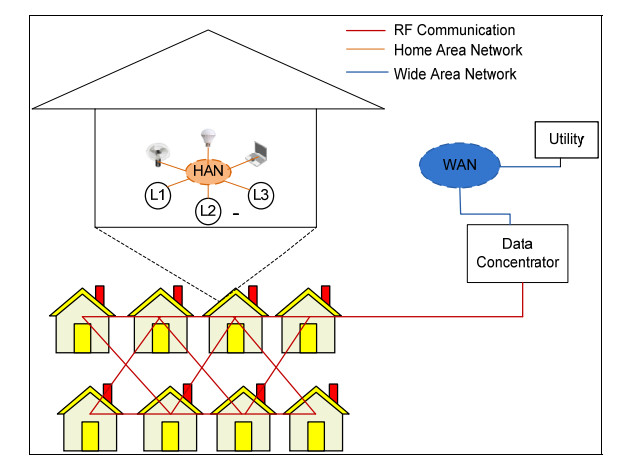









 DownLoad:
DownLoad:
